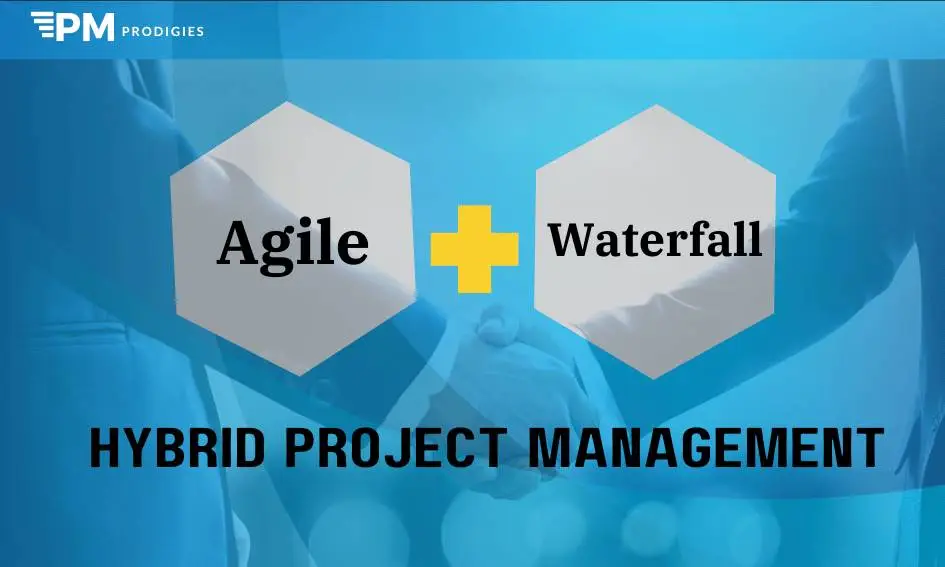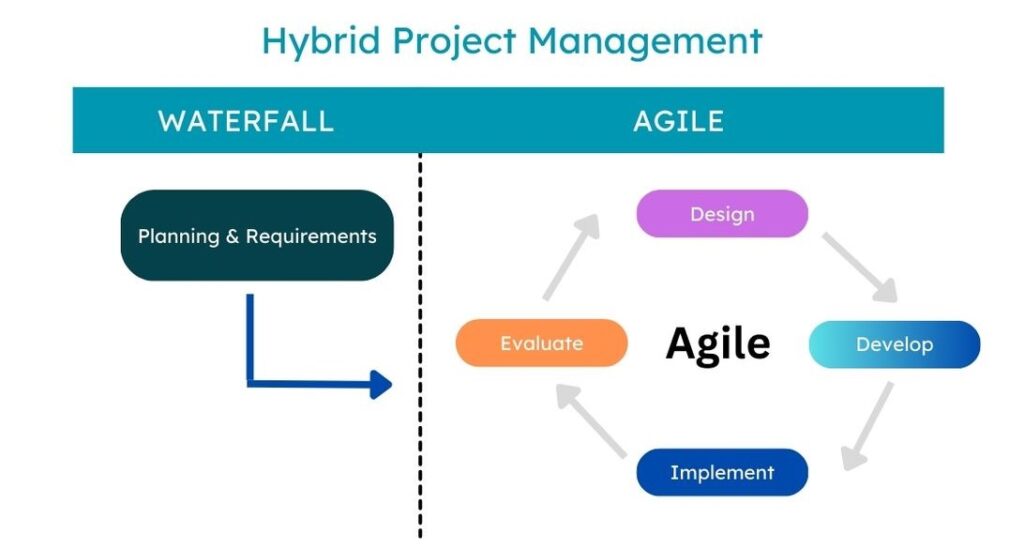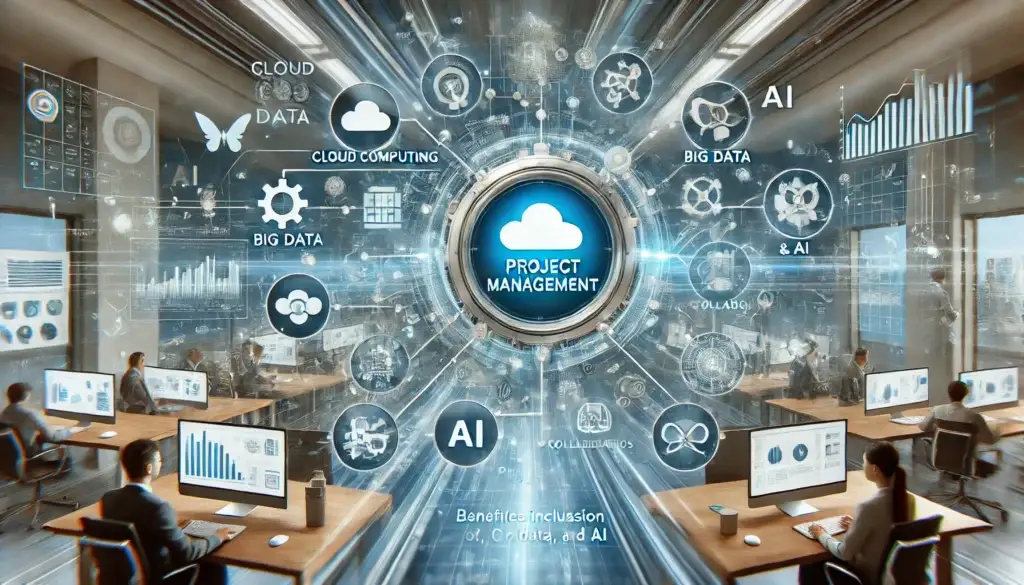
As projects become increasingly complex, Hybrid Project Management (HPM) has emerged as a powerful solution, blending the best of Agile and Waterfall methodologies. This approach is especially valuable for seasoned project managers who need to navigate diverse stakeholder demands, regulatory requirements, and innovation-driven environments.
Understanding Hybrid Project Management
Hybrid Project Management combines elements from different project management methodologies to create a flexible yet structured approach. It allows teams to utilize the rigorous planning of Waterfall and the adaptive flexibility of Agile, depending on the project’s needs.

When to Use Hybrid Project Management?
It is most effective in scenarios where:
- Diverse Stakeholder Needs: For instance, a project involving a tech development team favoring Agile and a client preferring Waterfall for regulatory compliance. Hybrid management accommodates both, ensuring smooth project flow.
- Complex Projects: Large-scale projects with multiple phases, such as developing a healthcare app that requires rigorous planning for compliance and flexibility for continuous updates.
- Innovation-Driven Projects: Industries like tech and finance, where the pace of innovation is rapid but must be balanced with structured processes.
How Hybrid Project Management Works?
In Hybrid Project Management, the methodology is customized to fit the specific project requirements. Here’s a typical workflow:
- Planning Phase: Use the Waterfall approach for detailed planning, where the scope, objectives, and milestones are clearly defined. This phase is crucial for projects with strict compliance needs.
- Execution Phase: Transition into an Agile framework for development and execution. Agile’s iterative cycles (sprints) allow teams to adapt to changes, incorporate feedback, and deliver increments faster.
- Integration: Regular review meetings ensure that the Agile iterations align with the Waterfall milestones. This integration helps in maintaining control while being flexible.

Benefits of Hybrid Project Management
- Enhanced Flexibility: The ability to switch between methodologies allows teams to respond quickly to changes while maintaining control over critical project elements.
- Better Risk Management: Hybrid Project Management enables early risk identification during the Waterfall phase and dynamic risk management through Agile’s iterative process.
- Improved Stakeholder Collaboration: By accommodating different working styles, Hybrid Project Management fosters better collaboration and communication between teams and stakeholders.
- Higher Quality Deliverables: Continuous testing and feedback loops in Agile, combined with the structured documentation of Waterfall, result in higher-quality outputs.
Challenges in Hybrid Project Management
- Complex Coordination: Managing two methodologies simultaneously requires careful coordination and robust communication channels.
- Resource Allocation: Balancing resources between the Waterfall and Agile phases can be challenging, especially in large projects.
- Cultural Differences: Team members might struggle to adapt if they are used to one methodology over the other. Training and change management are essential.
- Resistance to Change: Some teams may resist adopting a hybrid approach, requiring clear communication of the benefits and ongoing support.
Best Practices for Implementing
- Start with a Pilot Project: Before fully committing to Hybrid Project Management, test it on a smaller project to understand its impact and refine your approach.
- Define Clear Roles and Responsibilities: Ensure that all team members understand their roles in both the Waterfall and Agile phases.
- Use Hybrid Project Management Tools: Leverage tools that support both Waterfall and Agile methodologies, such as Jira, Asana, or Trello. These tools allow seamless integration and tracking across phases.
- Continuous Training: Invest in ongoing training to help team members adapt to Hybrid Project Management. Training should focus on Agile practices, risk management, and communication skills.
Future of Hybrid Project Management
The future of Hybrid Project Management is promising, with trends such as:
- Increased Tool Integration: Project management tools are becoming more sophisticated, offering seamless integration of Waterfall and Agile workflows, making hybrid approaches easier to manage.
- Customizable Hybrid Models: Organizations are developing more tailored hybrid models to suit specific project needs, blending elements from various methodologies, including Lean, Six Sigma, and DevOps.
- Global Adoption: As businesses globalize, the demand for versatile project management approaches like Hybrid Project Management will grow, particularly in sectors like finance, healthcare, and IT.
Conclusion
Hybrid Project Management is increasingly becoming a go-to approach for complex projects requiring both flexibility and structure. By leveraging the strengths of both Agile and Waterfall methodologies, seasoned project managers can navigate the challenges of modern project landscapes, ensuring project success in a rapidly changing environment.
For project managers in India, the US, the UK, and beyond, adopting Hybrid Project Management can be a significant step forward in delivering high-quality projects on time and within budget.


